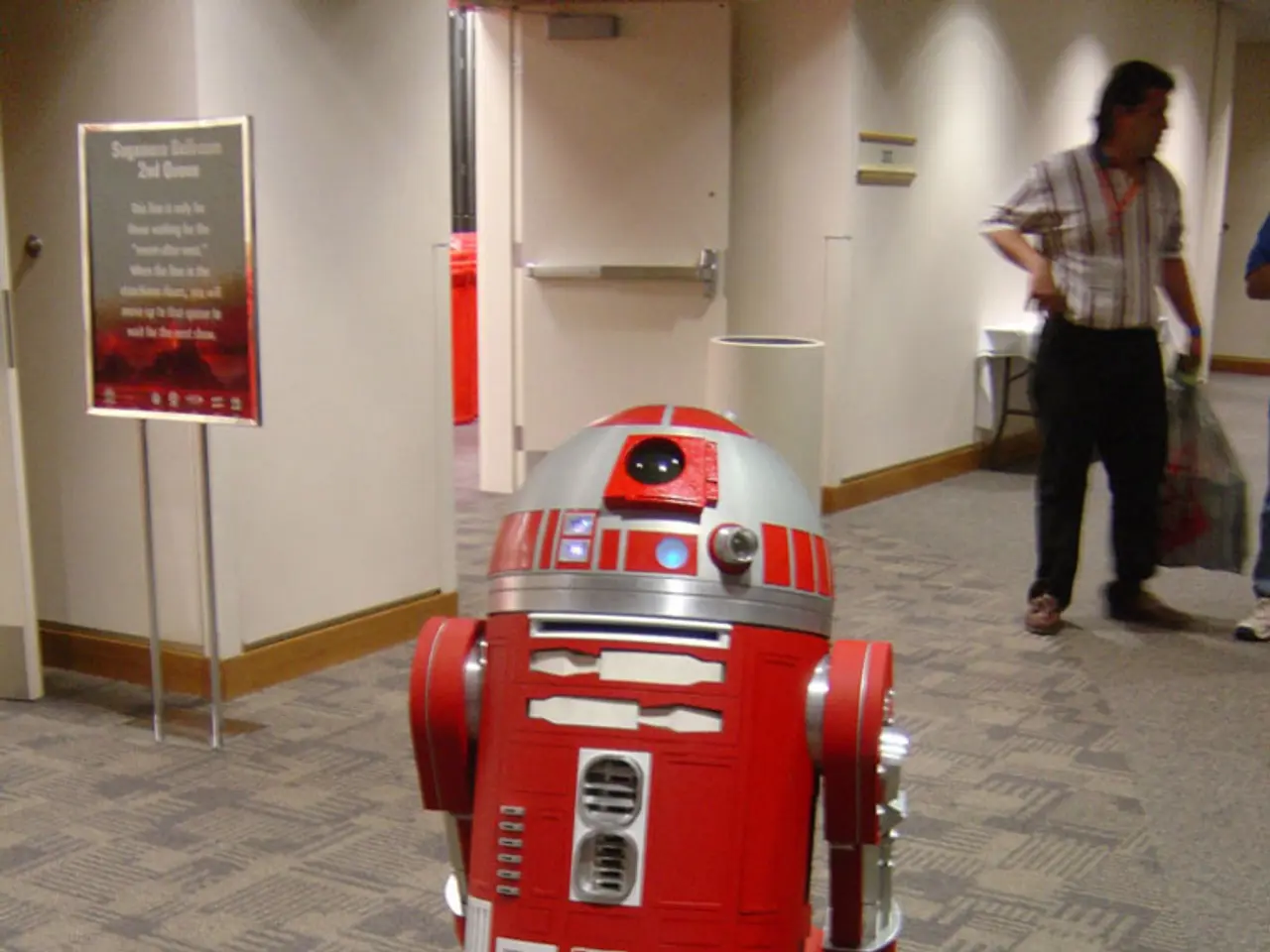Transforming Manufactory Work with Low-Code AI Robotics Software on Shop Floors
Simplifying Robotic Automation in Manufacturing with Low-Code Software
Low-code software is revolutionising the manufacturing industry, making it easier for operators and engineers to program robots and develop automation workflows without extensive coding knowledge. One such low-code software solution is provided by Palladyne AI.
In an interview with Automation World Gets Your Question Answered podcast, Kristi Martindale, Chief Commercial Officer at Palladyne AI, discussed the benefits of their low-code platform for robotics. The software is designed to streamline the process of developing robotic automation workflows, making it accessible to a wide range of shop floor personnel.
The software offers two primary methods for low-code task training: chatbot-driven and task-based training. The chatbot interface allows for easy input of commands using simple, natural language-like formats, such as "pick this", "place that", and "send it here". This approach enables operators to quickly train the robot without needing to write complex code.
Alternatively, the task-based training method involves demonstrating a task to the robot, which the software then autonomously replicates. This demonstration-based learning approach eliminates the need for extensive programming, making it ideal for non-coding operators and engineers.
Palladyne AI's low-code software is not just limited to training robots. It can also be used to establish and track workflow procedures, ensuring efficiency and accuracy in manufacturing processes. Moreover, the learning curve for the software is relatively short, with the potential for quick adoption by shop floor personnel.
The adoption of low-code software in manufacturing industries is on the rise, as it lowers the barrier to automation adoption and enables faster, more flexible integration of robots into manufacturing workflows. This approach aligns with the broader trend in robotic process automation (RPA) towards automating repetitive tasks, freeing workers from tedious duties and improving efficiency on the shop floor.
In conclusion, the low-code task training approach in Palladyne AI's software offers a user-centric, low-technical-step solution for training robots efficiently via simple command inputs or demonstrations. This empowers non-coding operators or engineers to build and manage automation workflows quickly and independently, contributing to a more efficient and productive manufacturing environment.
For those interested in learning more about Palladyne AI's low-code software, the podcast discussion is available in its full form for listening.
- The manufacturing industry is benefiting from the rise in adoption of low-code software, particularly in streamlining robotics automation through solutions like Palladyne AI.
- In addition to training robots, Palladyne AI's low-code software can also facilitate the development and tracking of manufacturing workflow procedures, enhancing efficiency and accuracy.
- Low-code software like Palladyne AI's contributes to the broader trend in robotic process automation (RPA) by enabling faster, more flexible integration of robots into workflows, which ultimately reduces complexities in technology, finance, data-and-cloud-computing, and artificial-intelligence sectors.




